Lower Back Pain When Squatting: Causes & Fixes
Author:
Reviewed by:
(21 years of Oly Lifting experience)
Unlock your full potential by engaging with our experts and community! Have questions about your fitness journey or looking for expert advice on weightlifting techniques? Don’t hesitate — leave a comment below and David Sasha Schulz will provide a personalized answer and insights to help you reach your goals.
Torokhtiy is reader-supported. Some links are affiliate links, and we may earn a commission at no extra cost to you. See our disclosure page for details.
Lower back pain when squatting is a common complaint among those who incorporate strength training into their fitness routine. This multifaceted issue can be a hindrance to both performance and everyday well-being. Squatting a complex movement, engages multiple muscle groups and joints, and when performed incorrectly can place unnecessary stress on the lower back.
This article outlines various facets of lower back pain related to squatting. We will explore the anatomy of the lower back, the mechanics of proper squat technique and identify specific injuries that can arise from this exercise.
Lower back pain when squatting is often due to rapid progressions of weight and/or volume, poor form, insufficient warm-up or underlying spinal conditions. Ensuring proper technique, such as keeping the spine neutral, can help prevent pain and injuries during this exercise.
Furthermore, we aim to provide actionable advice on how to manage and prevent lower back pain after squats, ensuring that enthusiasts of this foundational movement can continue to train effectively, and without discomfort.
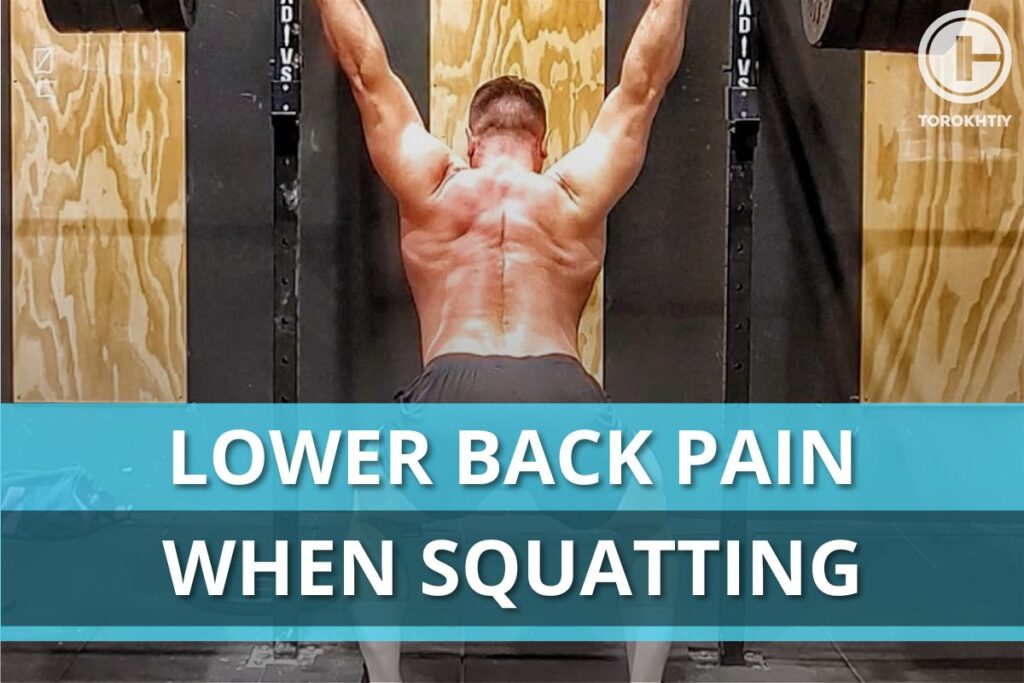
Understanding Lower Back Pain In Squats
1. Anatomy of The Lower Back
The lower back or lumbar region is a complex area consisting of bones, joints, nerves, ligaments, and muscles all working together to provide support, strength and flexibility. This area comprises the five lowest vertebrae known as L1 through L5.
Between these vertebrae lie intervertebral discs that enable slight movements of the vertebral column and also play the role of a ligament to keep the vertebrae together. Supporting the spinal column are the paraspinal muscles and other core musculature.
These components are crucial in maintaining proper posture and stability during movements, such as squatting. An understanding of this anatomy is essential for recognizing how and why the lower back hurts when squatting.
2. Mechanics of Squatting
Squatting is a compound movement that requires coordinated actions from the hips, knees, and ankles, along with a strong core engagement. Proper squat techniques involve keeping the back in a neutral position, chest up (less so with a low bar squat), and the weight of the body distributed across the entire foot.
As one descends, the hip should move back and down, while the knees track in line with feet. Maintaining this form ensures that the glutes, quads and hamstrings are effectively engaged, minimizing the strain of the lower back. Deviations from this technique can distribute the load improperly, leading to potential pain or injuries.
3. Common Causes of Lower Back Pain After Squats
So, why does your lower back hurt after squats? Lower back pain from squats often arises from poor programming/progressions, poor form, insufficient warm-up, or existing back conditions.
Bad form and rapid weight increases strain muscles and ligaments without giving them a chance to adapt while inadequate warm-up leaves muscles susceptible to injury. Underlying issues like disc or nerve problems also contribute to pain.
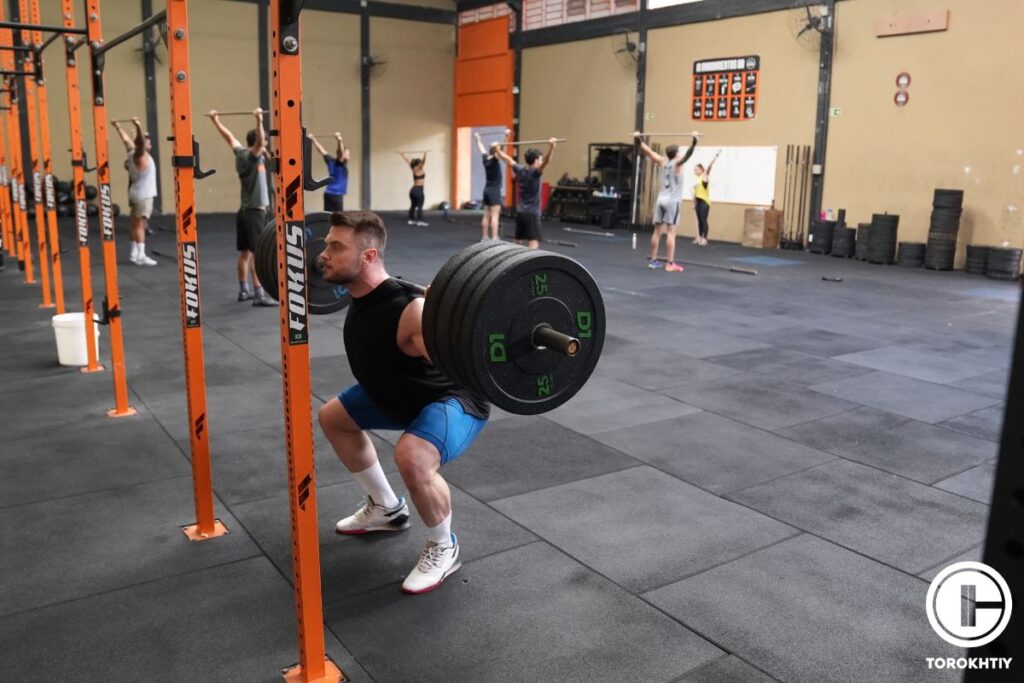
Identifying Lower Back Injuries Related To Squats
1. Types Of Lower Back Injuries
Lower back injuries from squats, commonly manifest as muscle or ligament strains and sprains, intervertebral disc tears or herniations, or facet joint injury. Muscle strains occur when fibers in the paraspinal muscles are overstretched or torn, often a result of sudden technique deviation or lifting excessive weight.
Ligament sprains involve similar mechanisms, but affect the tough bands of collagen fibers connecting spinal bones and stabilizing the spine. Herniated discs, another potential injury, happen when the inner gel-like core of an intervertebral disc protrudes through its outer layer exerting pressure on nearby nerves.
This is usually due to cumulative stress over time, potentially relating to poor squatting technique. Facet joint pain arises from inflammation, or microscopic injuries to these joints, which can be exacerbated by excessive arching or twisting of the back during a squat.
Also you should know the difference between pain and lower back sore after squats or tight lower back after squats. Identifying the type of problem or injury is crucial for appropriate treatment and recovery.
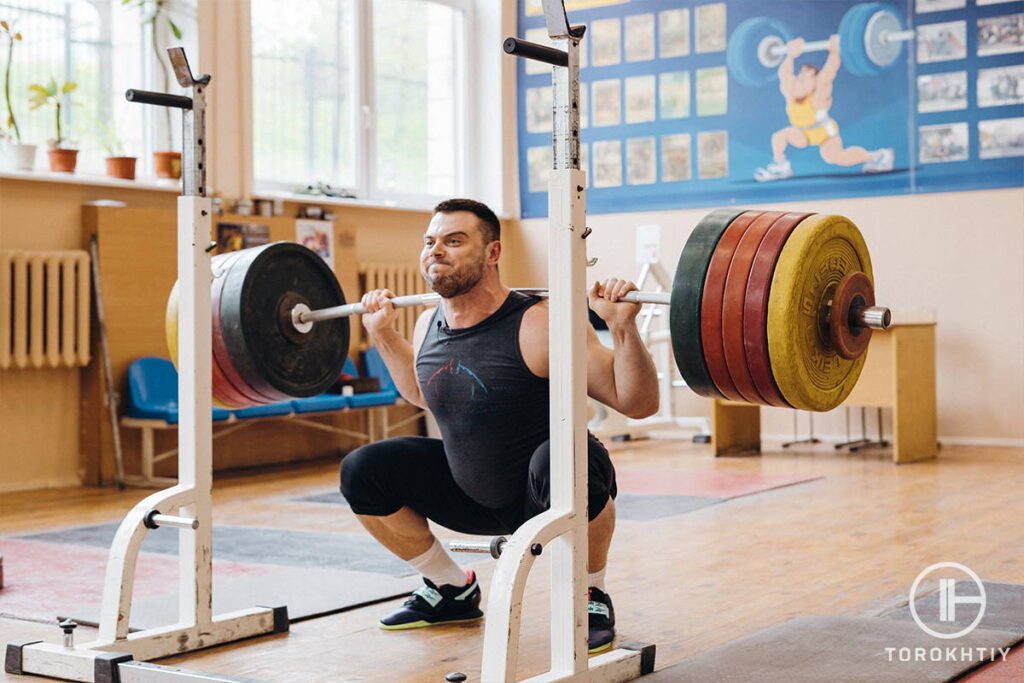
2. Symptoms of Injuries
The symptoms of lower back injuries from squats vary depending on the injury type, but commonly include localized pain, stiffness and reduced mobility. Strains may cause a dull, aching pain that intensifies with movement, and in severe cases result in muscle spasm.
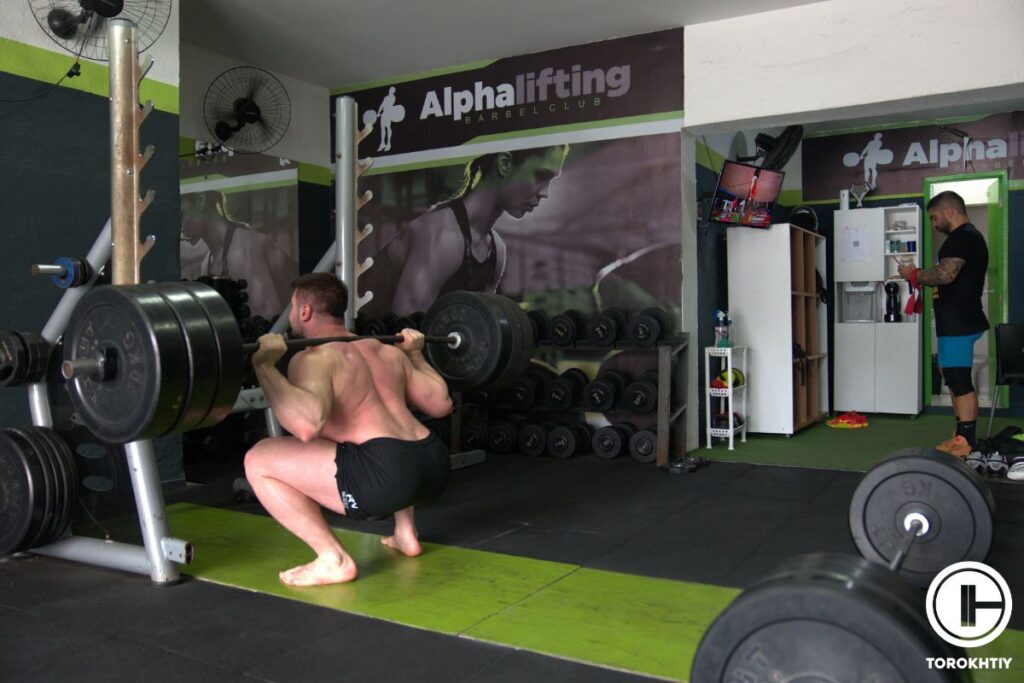
Muscle strains could result in sharp or dull pain, and may be accompanied by swelling or bruising. Herniated discs can lead to sharp, shooting pains and numbness/tingling that can radiate down the leg, a condition known as sciatica. Facet joint issues may result in pain that worsen with twisting or arching movements.
Additionally, a decrease in the ability to maintain proper posture or perform daily activities without pain can signal lower back injury. Early identification and treatment of the symptoms can significantly improve recovery outcomes to help maintain overall spinal health.
Follow us!

Free!
Get a 2-week Weightlifting Program as a bonus for the subscription to kickstart your training plan!

Free!
Preventing Lower Back Pain From Squats
1. Proper Warm-Up Techniques
Adequate warm up is essential to prepare the muscles and joints for the demands of squatting. Begin with 5 to 10 minutes of light cardiovascular activity, such as jogging or cycling to increase overall body temperature and blood flow.
Follow this with dynamic stretching that mimics the squatting movement like bodyweight lunges or leg swings to enhance the range of motion. Incorporating mobility exercises, such as hip circles and thoracic rotations can further lubricate joints and the core and gluteal muscles.
Also, specific squats warm up, not only increases muscle playability, but also establishes neuromuscular connections that are crucial for maintaining proper form during squats significantly reducing the risk of lower back pain.
2. Correct Squatting Technique
To execute squats safely, start by standing feet about shoulder-width apart, and toes slightly pointed out. Engage your core, keep your chest up. As you descend, push your hips back slightly as if sitting into a chair. Ensure your knees stay in line with your feet and don’t let them collapse inward.
Lower yourself only as far as you can maintain a flat back. In the ascent, keep your chest up and push through the whole foot to return to a standing position. It’s crucial to avoid overarching or rounding your back throughout the movement.
Practicing with a lighter weight or a body weights squat can help reinforce proper mechanics before adding more kilos.
3. Strengthening Exercises for The Lower Back
Beyond the squat itself, strengthening the lower back, and its supporting muscles is vital for preventing pain. Exercises, such as the plank and bird dog, when done correctly, can increase spinal stiffness and are very well tolerated during rehabilitation.
Deadlifts when performed with correct form, strengthen the entire posterior chain, including the lower back. Other exercises to strengthen the lower back muscle include; goodmornings, back extensions, and reverse planks.
Quadriceps exercises like the leg extension or hack squat will allow continued stimulation of those muscles without the same type or amount of spinal loading. Hip thrusts and bridges target the glutes and allow continued strength training without pain.
Incorporate these exercises 2-3 times per week for 3-4 sets, focusing on form and controlled movements, rather than heavy weights. Over time these exercises can build a solid foundation, reducing the likelihood of pain and injury during squats and other activities.
4 Ways to Mitigate Lower Back Pain From Squats
1. Modify Workouts
When lower back pain is a concern, modifying workout is key to continue exercises without aggravating the condition. For those who experience discomfort with traditional squats, alternatives like split squats or step-ups, can be equally effective for lower body development by reducing lumber load.
It may also be beneficial to do supplementary core strengthening exercises to increase spinal stiffness for subsequent lower body exercises. Adding core-strengthening exercises is another key point in solving this issue. Strong core muscles are essential for lower back support during squats.
You can add movements that target the abdominals, obliques, and lower back muscles: planks/reverse planks (with weights), farmers/suitcase carries and goodmornings are effective exercises for strengthening the core and facilitating stability.
2. Immediate Response To Injury
If you experience lower back pain, during or after squatting, it’s important to act promptly. Cease any activity that exacerbates the pain and rest the affected area to prevent further injury.
After an acute/traumatic injury, consult a qualified professional to have an assessment and treat the issue on time. Continue activities that do not cause pain or load the injured area significantly. Use heat/ice as needed and topical pain relievers as directed.
Over-the-counter anti-inflammatory medication may help alleviate pain, but they should be taken only if necessary, following directions on the label. This immediate care can help manage symptoms of minor back strains related to squats, but they also interfere with the healing process.
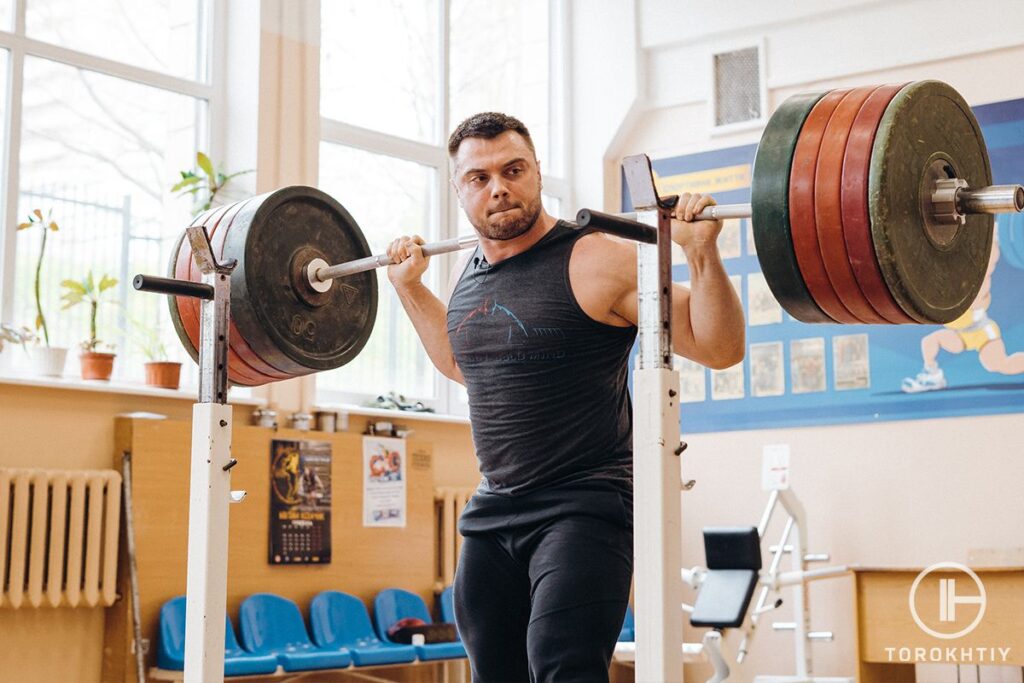
3. Long-Term Treatment Options
For sustained or sharp lower back pain after squats a more comprehensive treatment plan may be necessary. Once acute inflammation subsides, introducing gentle stretches and strengthening exercises can help rehabilitate the lower back.
Physical therapy is often beneficial, providing personalized exercises that target muscle imbalances and improve core stability. In some cases, chiropractic adjustments or massage therapy may be recommended to alleviate pain and improve function.
If conservative measures are insufficient, medical interventions, such as corticosteroid injections, or in severe cases, surgery may be considered. Throughout treatment, maintain open communications with doctors to tailor pain management strategies effectively.
4. Recovery and Returning to Squats
The road recovery after lower back injury from squats should be gradual, beginning with low load activities, like walking, or swimming to maintain fitness without loading the lumbar spine region very much.
As pain permits, slowly introduce lower body exercises, starting with bodyweight movements and paying close attention to form. Progress gradually (not necessarily slowly) and as symptoms allow, from bodyweight squats back up to previous working weights.
🔻GET A FREE PROGRAM DEMO: 12 Week Squat Program by Oleksiy Torokhtiy
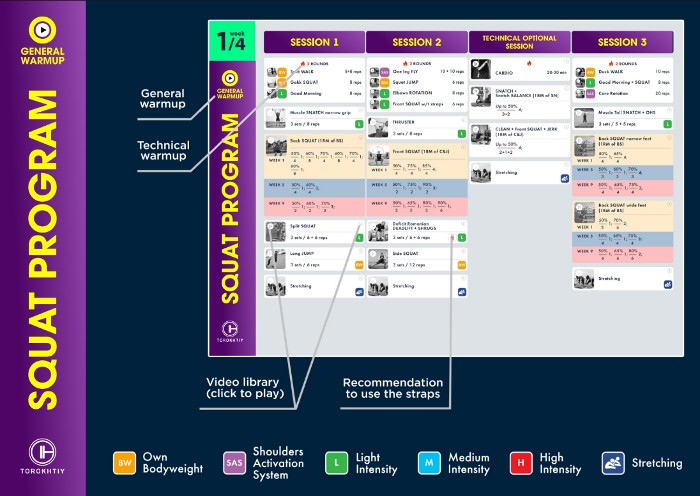
Do you want to double your squat strength? In just 12 weeks, you’ll be able to boost your squat results.
Enter your details and get a free demo (1 free week) of the squat program straight into your inbox.
Additional Considerations And Tips
Equipment and Accessories
The use of appropriate equipment and accessories can play a significant role in preventing and managing lower back pain from squats. Lifting belts can provide additional support for the lower back by increasing intra-abdominal pressure, which in turn helps to stabilize the spine in heavy lifts.
However, they should not be over-relied upon and are best used when lifting near maximal loads. Rollers and massage balls, also available tools for self-myofascial release, helping to alleviate muscle tightness and improve mobility.
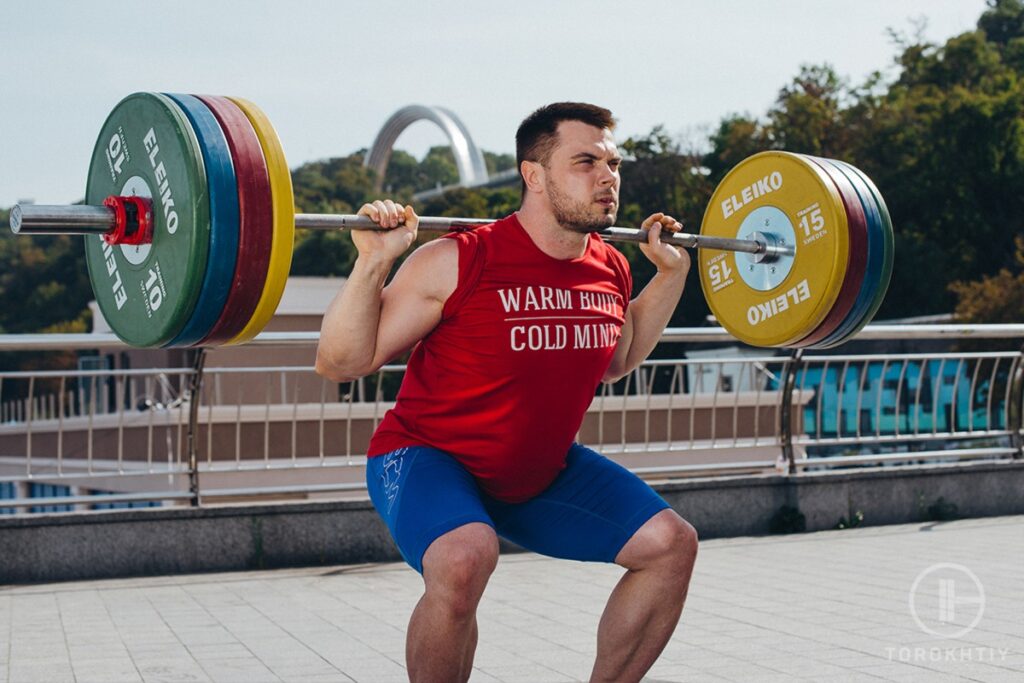
FAQ
Are Deep Squats Bad For Your Back?
Deep squats are not inherently bad for your back if performed with proper form and adequate mobility. However, without adequate mobility they can increase the stress in the lumbar spine and increase the risk of such injuries as herniated discs and sciatica. Thus, deep squatting can be harmful to the body if done too much and/or incorrectly.
Should I Squat Past 90 Degrees (Below Parallel Squats)?
Squatting past 90° is acceptable as long as you’re able to maintain proper technique and it doesn’t cause pain. This deeper range can engage muscles more fully, but it’s important to maintain a neutral spine throughout the movement.
How Deep Is Too Deep For Squats?
How deep one should squat varies by individual flexibility, hip structure, and strength. “Too deep” is when form is compromised, such as “butt wink” or the lower back rounding, which can lead to injury. Listen to your body and prioritize form over depth.
Conclusion
Understanding and addressing lower back pain when squatting can be achieved by incorporating proper technique, rehab exercises and smart recovery strategies. You can enjoy the benefits of squatting with lower risk. Your experiences, insights and questions are invaluable.
Join the conversation below and share your journey or sick advice on managing lower back concerns. Let’s learn and grow stronger together. Engage with us in the comments!
Also Read:
- Shoulder Pain When Squatting: Causes & Prevention
- Front Squat Wrist Pain: 7 Reasons & Solutions
- Handstand Wrist Pain – How to Avoid Injuries?
- Low Bar Squat Wrist Pain: Reasons & Solutions
- Wrist Pain From Lifting: All Your Questions Answered
- Best Squat Warm-Up For Peak Performance
- Strong Arms, No Pain: Tackling Elbow Discomfort from Weightlifting
- 10 Best Squat Alternatives For Bad Back (CPT Recommended)
References:
- Patel VB, Wasserman R, Imani F. Interventional Therapies for Chronic Low Back Pain: A Focused Review (Efficacy and Outcomes). Anesth Pain Med. 2015 Aug 22;5(4):e29716. doi: 10.5812/aapm.29716. PMID: 26484298; PMCID: PMC4604560.
- Matheve T, Hodges P, Danneels L. The Role of Back Muscle Dysfunctions in Chronic Low Back Pain: State-of-the-Art and Clinical Implications. J Clin Med. 2023 Aug 24;12(17):5510. doi: 10.3390/jcm12175510. PMID: 37685576; PMCID: PMC10487902.
- Washmuth NB, McAfee AD, Bickel CS. Lifting Techniques: Why Are We Not Using Evidence To Optimize Movement? Int J Sports Phys Ther. 2022 Jan 1;17(1):104-110. doi: 10.26603/001c.30023. PMID: 35024210; PMCID: PMC8720246.
- Hartmann H, Wirth K, Klusemann M. Analysis of the load on the knee joint and vertebral column with changes in squatting depth and weight load. Sports Med. 2013 Oct;43(10):993-1008. doi: 10.1007/s40279-013-0073-6. PMID: 23821469.
- Activate & Achieve: Squat Warm-Up For Peak Performance. Torokhtiy blog: https://torokhtiy.com/blogs/guides/squat-warm-up.
- Sean Sadler, Samuel Cassidy, Benjamin Peterson. “Gluteus medius muscle function in people with and without low back pain: a systematic review”, BMC Musculoskelet Disorders, no. 20 (1), (2019): 463.
- All photos are made by Torokhtiy Media team.
Why Trust Us?
With over 20 years in Olympic weightlifting, strength training, nutrition coaching, and general fitness our team does its best to provide the audience with ultimate support and meet the needs and requirements of advanced athletes and professional lifters, as well as people who strive to open new opportunities and develop their physical capabilities with us.
By trusting the recommendations of our certified experts in coaching, nutrition, and sports training programming, as well as scientific consultants, and physiotherapists, we provide you with thorough, well-considered, and scientifically proven content. All the information given in the articles concerning workout programming, separate exercises, and athletic performance, in general, is based on verified data.
The product testing process is described in more detail here.
Author: David Sasha Schulz
Doctor of Chiropractic, BSc Human Biology, CSCS
Strength coach (CSCS) – 10 years
Sasha is a Chiropractor and Kinesiologist practicing in Kelowna, BC, Canada. He has been practicing Chiropractic since 2019, integrating manual therapy, strength training and programming principles, and nutritional strategies to get his patients optimal results. He currently scratches the competitive itch in fitness, and the occasional endurance race, and plays golf and snowboards for fun. He has an interest in all strength and fitness-related sports.
Reviewed by: Oleksiy Torokhtiy
Olympic Weightlifting Champion, PhD in Sport Science
Best Results: Snatch – 200 kg,
C&J – 240 kg
Oleksiy Torokhtiy is a professional athlete boasting 20 years of experience in Olympic weightlifting. With multiple European and World titles under his belt, he has showcased his prowess in two Olympic Games (Beijing 2008 and London 2012). Upon concluding his illustrious career, Oleksiy dedicated himself to coaching. By 2022, he had conducted over 200 weightlifting seminars worldwide. He is the visionary behind an international sportswear and accessories brand known for its motto, “Warm Body Cold Mind.” Additionally, he is an esteemed author and the creator of a series of training programs and eBooks.




Still have questions after reading our article? Unlock your full potential by engaging with our experts and community! Don’t hesitate — leave a comment below and David Sasha Schulz will provide a personalized answer and insights to help you reach your goals.